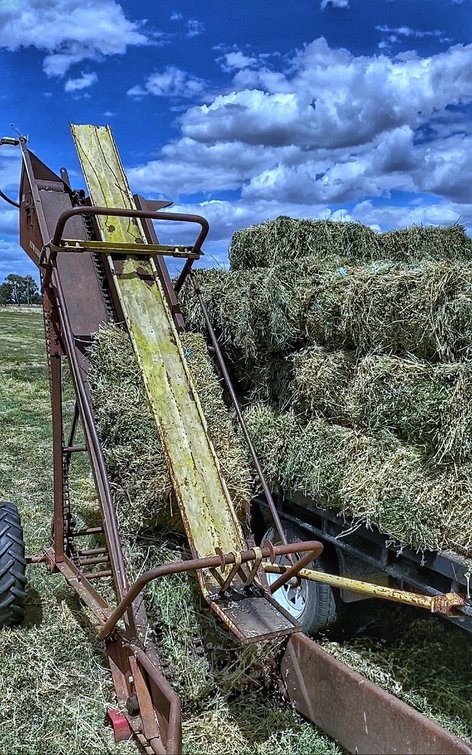Australia
February 21, 2022

When the horse float is designed to carry horses as ‘big as elephants’, you know it is going to be a unique set of circumstances.
Such is the case with Clydesdale horses. Describing them as ‘heavy horses’ is an understatement where the average horse is around 700kg, and a stallion can top 800kg.
Beautiful, graceful and iconic, Clydesdale horses have been used as work animals for anything from carting out felled timber to hay carting or even beer kegs. To care for them, is a commitment to tailor everything a horseman does, to their needs. Including the horse float.

Lucerne forms the backbone of feed requirements at Kardinia Clydesdales.
Kardinia Clydesdales in north central Victoria has been breeding Clydesdales for three generations. As a returned servicemen of the 8th Lighthorse Division which served in Gallipoli and Egypt in WWI, Daryl Wiltshire’s grandfather continued his love of horses on the land. By the time Daryl’s father was 3, he was driving the plough with a Clydesdale team on his father’s knee, and by 10, harnessing them to work the ground.
Such is the love of these horses, that when machinery took over much of the work of horses, the Wiltshire family continued the tradition of using Clydesdales to cut, sow, harvest, bind the hay and cart it. In those days, the teams would consist of 8-10 Clydesdales to pull the equipment.
Fast forward to 1999, and Daryl and his wife, Junita took on Kardinia Clydesdales as a stud operation to service the many enquiries for breeding animals. Running around 20-25 horses on 50 acres, Daryl and Junita continue the tradition of caring for these animals and their specific needs to gain the very best results.
Feeding Clydesdales is a big job.
Lucerne to the rescue
Each Clydesdale consumes around 10kg of baled feed per day so much of the operation of the property is growing the necessary hay and lucerne needed to keep them in top condition.
Typically, the horses go through 150 rolls of baled hay and 1,000 square bales.Seven years ago, Daryl planted Barenbrug’s SARDI 7 Series 2 lucerne to provide the calcium and protein, while wheaten and oaten hay provides the bulk of dry matter.
“You may have the best genetics in the world, but without decent nutrition, you will never know,” says Daryl.
“They may be stunted from not have enough protein or calcium. That is why we like lucerne, it gives a good amount of protein (between 15-18%), calcium and folate and all the good things that help them to develop.”
“In the morning I will give them a blend of oaten and cereal hays and the lucerne in the evening, especially in the cooler months, plus whatever they graze.”
The region is principally Shepparton light sandy soil. The pH suits the SARDI 7 Series 2 lucerne, thriving with a bit of rain or irrigation to get it to leap out of the ground to make the most of the winter activity. The past season, Daryl has been able to do three cuts, with the potential to do another before Easter, as well as grazing. The horses graze the paddocks for about 2-3 weeks and are rotated through. Oversowing with oats or clover, Daryl has achieved 120 6x4 round bales on 10 acres, and averages 20-25 square bales per acre per cut.
Daryl and Junita prefer not to use insecticides and herbicides, mostly to avoid any chemical residue for the grazing horses. While the lucerne is not an intensive crop, the health of the horses continues to thrive. Salt licks and a bit of copper and dolomite mixed into the wheat and oaten hay round out the supplemental needs.
“We are pretty organic, and the horses can be sensitive to inputs such as urea, so we might use a bit of DAP at the beginning of the growing phase, if it is not to be grazed.
“What is astonishing is that it is still the same lucerne crop we planted 7 years ago and it still continues to provide the majority of our needs and persists year after year. We are pretty happy with that and the Clydesdales continue to thrive.”
For more information on this variety, download our SARDI 7 Series 2 lucerne factsheet or contact you local Barenbrug AUS Territory Manager.